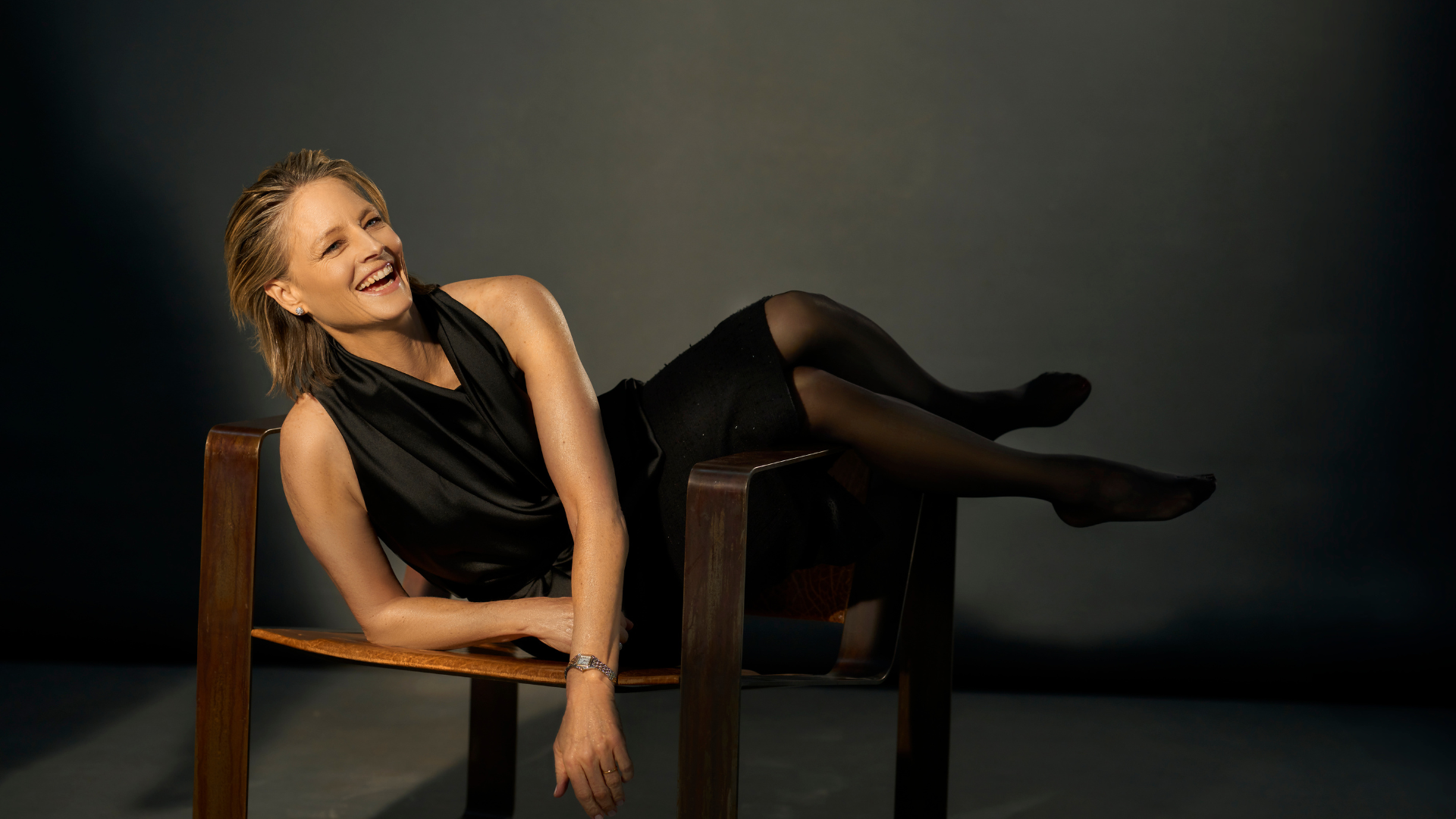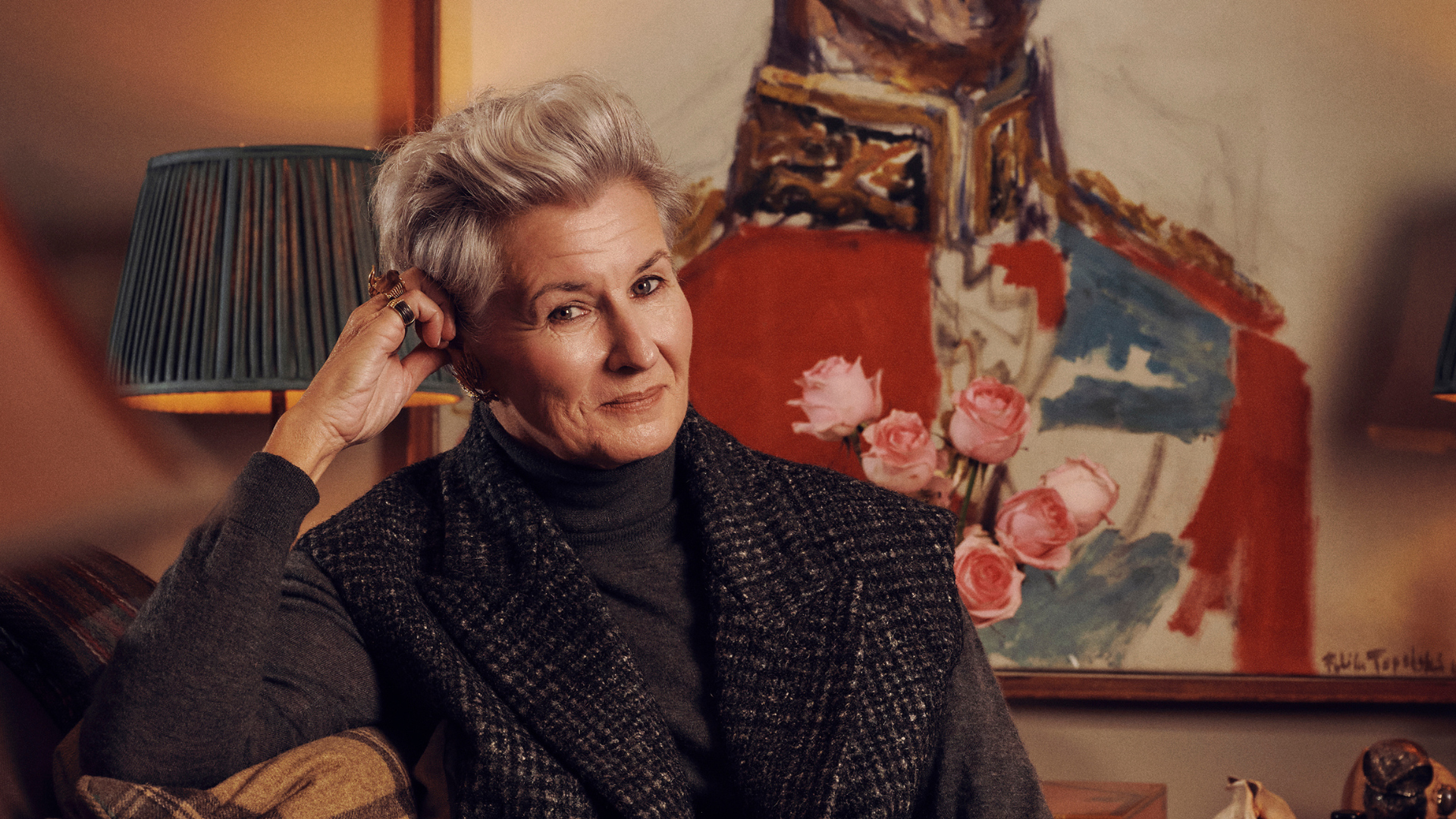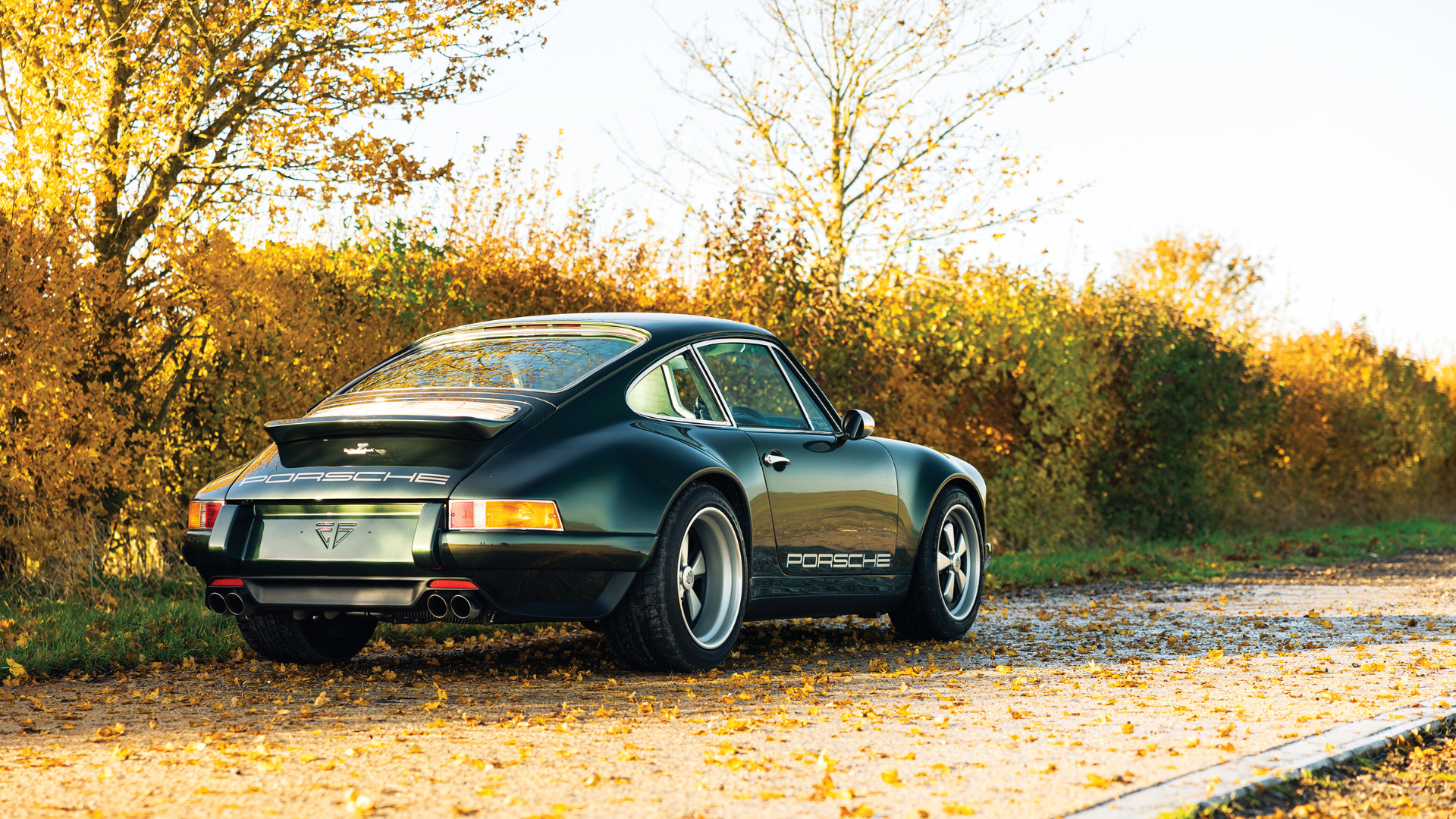Return of The King
When Jeremy King lost control of his restaurant business, the London dining scene and its famous patrons suffered a collective heartburn. But King — one of the creators of legendary haunts Le Caprice and The Ivy — is back. Can he work his magic again?

Not long ago, Jeremy King received a letter. The writer wanted to tell him about his experience at The Wolseley, the Piccadilly grand café run by King and his business partner, Chris Corbin, that had become a byword for polished, buzzy all-day dining. “I steeled myself,” King says, “because your immediate assumption is, here comes a complaint.” They were really well looked after, the writer continued; the food was great, and they had a wonderful time. But he wanted to talk about what happened after they left. While they were waiting for their coats in the lobby, his companion spotted some cakes in the salon off to the side and went to investigate. Her eye had been drawn to a marzipan-clad Battenberg, one of her favourites and a rare old-school sight in a contemporary restaurant. On her return she said she wished she’d known it was an option, because she would have ordered it. The writer assured her they could have it next time and, armed with their coats, they went outside, where the doorman got them a cab. As the door was closing, however, a staff member rushed after them and handed them a Wolseley box, saying simply, “Why wait?” When they opened it, they found two pieces of Battenberg cake inside.
Many restaurants’ first impulse would be to charge the ‘errant’ staff member with giving away company property without permission; for King, however, it was an exemplary instance of his maxim, honed over four decades in the restaurant business, that ‘generosity is central to hospitality’. If Corbin & King’s restaurants became stars — and from Le Caprice to J. Sheekey, and The Ivy to The Wolseley, theirs is a dazzling constellation — it was due to the relaxed kind of glamour they embodied rather than any Michelin-chasing avant-gourmand offerings from ostentatiously deployed superstar chefs. To walk into a C&K establishment was to be reminded of Hardy Amies’ oft-quoted dictum about clothes: that one should have bought them with intelligence, put them on with care, then forgotten all about them. They enhanced their patrons’ feeling of well-being without imposing or impinging unnecessarily; from the greeters and the waiting teams to the not-unfamiliar sight of King himself, walking the floor and hailing new and old friends, you knew you were in safe hands. “It’s funny you mention that,” King says when I bring up the Amies quote. “I went to one of those Savile Row events celebrating wool, and someone asked me what I thought about it. I said I live with wool every day, it’s my best friend. We wear our woollen suits and take them for granted, as we sometimes do with good friends.


But if we woke up tomorrow in a wool-free world, we’d definitely feel the lack.” For many, however, the gustatory equivalent of that barren world dawned on the morning of April 1, 2022, with the news that King and Corbin had lost a small-hours bidding war with their majority shareholder, the Thai-based Minor International, for full control of the business (which also included The Delaunay in Aldwych, Brasserie Zédel in Piccadilly Circus, Colbert in Sloane Square, and Fischer’s in Marylebone), and had been dismissed with immediate effect. “Is it always going to be a world where the good guys lose and the greedy, soulless and mean win out?” lamented Stephen Fry on Twitter, leading the charge of C&K loyalists who vowed they’d never set foot in the restaurants again. After a torrid night, and finding himself locked out of his work phone and email, King paid a valedictory visit to The Wolseley, where he had to convince the kitchen staff that the whole thing wasn’t an elaborate April fool. “There was a sadness, of course,” he says now, “and the first few months were hard, for a variety of reasons. But sometimes it’s a good thing to be forced into another opportunity. André Gide said that every man should have three careers, and I certainly feel rejuvenated by the change of circumstances over the past couple of years. People talk about the definition of madness as doing the same thing over and over again and expecting a different result, the Sisyphean thing, whereas it gave me the chance to start afresh and think, How can we do this better? And to bring everything I’ve learnt to bear on that question.”
It is an animated King facing me across a booth in Maison François, the Mayfair brasserie he’s made his office-cum-operations hub since his ousting. His trim six-foot-five-inch frame is encased in a woollen three-piece worn with the kind of gentleman-proprietor nonchalance that Amies would endorse, and while his slicked hair and trimmed beard are now the shade of snowy white appropriate to a 69-year-old, his lively, darting eyes, analysing every move on the restaurant floor with a forensic incisiveness (“There’s a generosity of table placement,” is one of his observations), would indicate that The Force is in him as strongly as it ever was (he’s treated with appropriate reverence by the Maison François staff, who ensure that his lapsang souchong is served with cold milk and hot water on the side, and who greet him with a cheery “Hello, maestro” as they bustle by).


This perch is also a convenient waystation for King to keep tabs on his three forthcoming projects (Chris Corbin has stepped back from frontline duties owing to ill health). To the west is The Park, in a brand new development opposite Kensington Palace Gardens; to the south-east is Simpson’s in the Strand, one of the last grands dames of the London dining scene (replete with groaning trolleys of colossal Scottish topside joints that were carved tableside), which closed in 2020 and which King is planning to re-inaugurate; and right around the corner is the former Caprice, a favourite haunt of Princess Diana’s in the 1980s and, with a pleasing circularity, the place where it all began for Corbin and King in 1981. It will be rebranded as Arlington (Richard Caring’s Caprice Holdings own the rights to the original name), and it should furnish King with the perfect opportunity to reflect on how far he’s come and where he might be heading. “A lot of restaurants have improved in the 40 or so years that I’ve been doing this,” he says. “But we’re now in a time where staff are feeling more and more disenfranchised and alienated, and where the churn is constant. We all need affirmation and encouragement — at Corbin and King we coined the phrase, ‘Let’s catch people doing things well rather than doing things badly’ — and that underpins my attitude to doing it in a different way. I believe in a duty of care, to both staff and customers, rather than efficiency and profit margins. I’ve always maintained that you should run a restaurant from the floor, not the boardroom.”
King is an expansive, discursive talker, ranging back and forth across his storied career and displaying an autodidact’s roving, cross-disciplinary enthusiasms. He grew up in Burnham-on-Sea in Somerset, where his first Saturday job was selling ice cream on the prom. His shyness was exacerbated by his sore-thumb status — he’d already reached his imposing height by the age of 14 — and his mother, a school administrator, didn’t alleviate his social unease by counselling that any friendly overtures from his peers were probably dutiful rather than heartfelt. “Any feeling of self-worth was somewhat discouraged,” he says. “I was more than happy to get away.”
He won a scholarship to Christ’s Hospital, a pioneering boarding school in Sussex, where fees were levied on a sliding scale determined by how much parents could afford; King found himself alongside on-their-uppers aristos and East End slum boys. “The only common factor was that you had to be fairly bright, and it inculcated in me a deep belief in the principle of egalitarianism, which I’ve carried with me to this day. In a restaurant environment the less affluent people are often the most interesting , creative and fun. And a restaurant needs to have a balance: if it’s dominated by one particular type of person, it becomes very boring. I’ll always remember talking to Adrian Gill about The Ivy, which he wrote the book on, and he always said how important it was that no tribe, as he put it, dominated there. Yes, it’s nice to have the leaders of publishing, advertising, theatre, and so on, but if the balance tips, it changes the atmosphere; you can’t be too incestuous. That’s why I particularly like grand cafés: their set-up speaks to that broad range of people. You can walk in and someone’s having coffee, the next person will be having steak and chips, the next person caviar and champagne, the next person afternoon tea. They’re not selling exclusivity.”








After A-levels, King moved to World’s End, in Chelsea, where he embarked on what he describes as “a brief and unhappy dalliance” with merchant banking while working part-time in a wine bar called Charco’s. In thrall at the time to Luke Rhinehart’s cult 1971 novel, The Dice Man, in which the protagonist throws the titular cubes to determine his decisions, King staked his future on a roll when, at 21, he faced the choice of taking up a place he’d won at Cambridge or accepting the job he’d been offered as Charco’s manager. The bar won out (“Few novels can change your life. This one will,” promised the book’s cover; in King’s case, the hype can be believed). At the same time, he was taking in the ambience of London’s sceniest restaurants of the era, the post-show theatreland canteen Joe Allen, where he was eventually offered a job as assistant maitre d’hotel, and Langan’s Brasserie, where he came under the beady if slightly ‘swimmy’ eye of its legendarily licentious proprietor Peter Langan, who, when in his considerable cups, wouldn’t so much walk the restaurant’s floor as crawl haphazardly across it, tugging off the occasional tablecloth as he went. “He decided that, at 25, I was just the person to open his next restaurant,” says King, who insists that he learned a lot from Langan, and not just to avoid drinking on duty (a tenet he broke for only one Wolseley mainstay, the eminently persuasive Lucian Freud: “Because when he was alone he would look for attention”; Freud returned the favour by portraying King in one of his final etchings). “Peter would say things like ‘great lighting’s about shadow’, which is so true. And Langan’s was the consummate restaurant, from commissioning artists for pieces to hang on the walls to being a place where a duchess and a taxi driver could share the same room. I took it all to heart.”
As Langan grew increasingly erratic, King joined forces with Corbin, who had been working on the floor at the Brasserie; they instituted a lunch club where they sought the most unusual and interesting places to eat out in London, which quickly evolved into the idea of creating those spaces themselves. The opening of Le Caprice established the initial C&K m.o. — to revive old restaurants with a rich provenance. There had been a restaurant on and off on the Caprice site since the 1920s, but Corbin and King set about giving it a distinctly modern cast. “We put an ad in the Ritz newspaper,” King says, “and I came up with a slogan, ‘The Caprice — behind The Ritz, ahead of its time’. When we opened in 1981, restaurants were still beset by the class structure. Chris was classically trained, whereas I was, in today’s terminology, the disruptor, unfettered by tradition, asking things like, ‘Why can’t we do eggs Benedict in a dinner restaurant?’ or, ‘Why can’t we have a middle section of the menu of starters or mains?’ The restaurant business is the most reactionary ever, they hate change, and Caprice wasn’t liked at first. It was New Yorkers who immediately embraced it, because they already had high-end brasseries, like Odeon, and then the artists and musicians caught on. My credo has always been the quote from Lampedusa’s The Leopard, where Prince Tancredi is asked why Italy is changing from feudal to federal, and he says, ‘For things to remain the same, everything has to change’. I believe so strongly in that — you don’t change the ethos or the ethics, but you might change the way it’s done. And the ideal scenario is that no one notices the change, even though it might be quite profound.”
By the time The Wolseley opened, in 2003, Corbin and King had effected just such a change in the way London dined: here was King’s egalitarianism writ large — diners found themselves sitting between the likes of Katie Price on one side and Lord Browne on the other, while a keen eye was kept on the price of coffee at Starbucks and Caffè Nero to ensure that The Wolseley’s offering, though a little more elevated, could be index-linked. With its setting in a former car showroom dating from the 1920s and its era-appropriate appurtenances, from graceful Deco teapots to the intricate geometries of its marble tiling, it pulled off the classic Corbin and King trick of seeming to have always been there.
Portrait: Charlie Gray






